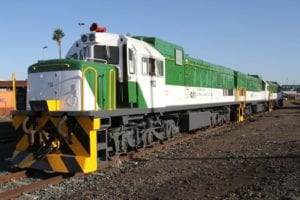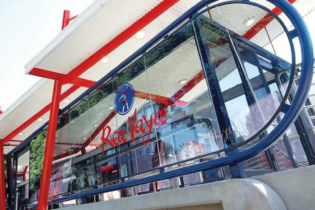Rail freight services to and from Maputo require a joint effort, explains *Nyameka Madikizela.
The Maputo Corridor’s Joint Operating Centre (JOC) has been operational since May 2013 and houses representatives from Transnet, Mozambique operators Caminhos de Ferro de Moçambique (CFM), the Maputo Port Development Corporation (MPDC), and Swaziland Railways. The private sector is also involved, with Grindrod having an operator’s table. More private sector participation is expected as growth in the port’s terminals increases. These operators prioritise integrating the planning and execution of cargo train operations between South Africa, Mozambique, and Swaziland. The growth in cargo volumes between South Africa and Maputo can be largely attributed to Mozambique’s economic reforms and its investments in its transport system. Mozambique has taken advantage of its location, boosting regional trade and making it a credible route for South African exports. From the time the corridor was conceptualised, the MPDC has wanted to compete against South African ports, by focusing the attention of operators towards operational efficiency cycles. The operators, through the JOC, prioritise the solving of logistics bottlenecks in the flow of cargo. The idea is to make the route so competitive that exporters and importers view it as a viable, economical transport route. The JOC, in the joint planning and execution of cargo trains, has already achieved significant efficiency gains. This includes a massive reduction of 24% in dwell time in Komatipoort and an unprecedented 57% reduction in dwell time at the port in Maputo. Right now, we are averaging an operational cycle (turn-around time) of 65 to 70 hours from origin to destination and back to origin. Member countries have invested in the rail network and repaired its bridges and, as a consequence, the network between the three countries can handle 75 wagon trains, where it previously accommodated 60 wagon trains – 70 trains are run each week. Teams at the JOC have managed to align and integrate investment plans, maintenance standards, safety procedures, operational philosophies, and skills development across the corridor. The outcome of these alignments – by operator’s and engineers – has seen a level of standardisation in the operating procedures, maintenance work, and safety standards between the three countries. This includes the activation of an integrated train plan (ITP) for coal, magnetite, containers, and fuel across the borders. Having one ITP allows all operators to work together and adhere to a scheduled train across country, rail, and port facilities throughout the Maputo Corridor.The JOC is working on rolling out technological systems that will show the location of trains, which is central to ensuring that the joint plans are executed. The JOC is also the central point for communicating deviations, should there be any.
A joint investment plan exists across three corridors, which has allowed the JOC to have one vision. This vision is informed by studies conducted by the JOC’s signatory operators and documented in a Memorandum of Agreement (MOA), signed in 2012. The investment plan is used to discuss the joint rehabilitation work necessary for the expected growth in volumes. Depressed commodity prices have, to some extent, slowed some investment plans and operators have been engaging with the mines. We are starting to see the steady growth stabilise and hope to see an upward trend in volumes. Investments in crossing loops have seen railway operators push 75 wagon trains on the same number of slots. CFM’s network, from 2013, has improved tremendously. The collapse of the Tenga Bridge, in early 2013, forced all operators to evaluate the network, as it had not been invested in in tandem with the sudden growth in volumes. Since then, 19 bridges have been fully repaired. Transnet is working with CFM to improve telecommunication and radio communication. This will be followed by train authorisation systems that will enable the operators to track train movements in real time. The rail network has sufficient capacity for the anticipated growth in volumes, and the investment plans will be constantly reviewed and updated as markets change. The port authority’s plans to invest in the depth of the draft for bigger vessels will be a game changer for the corridor. *Nyameka Madikizela, executive manager international business, Transnet.







